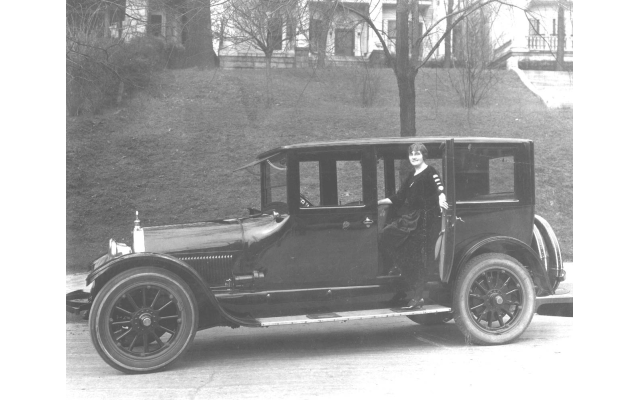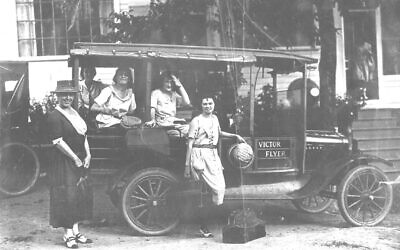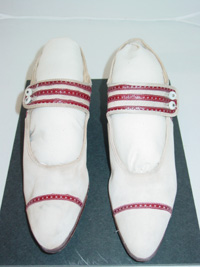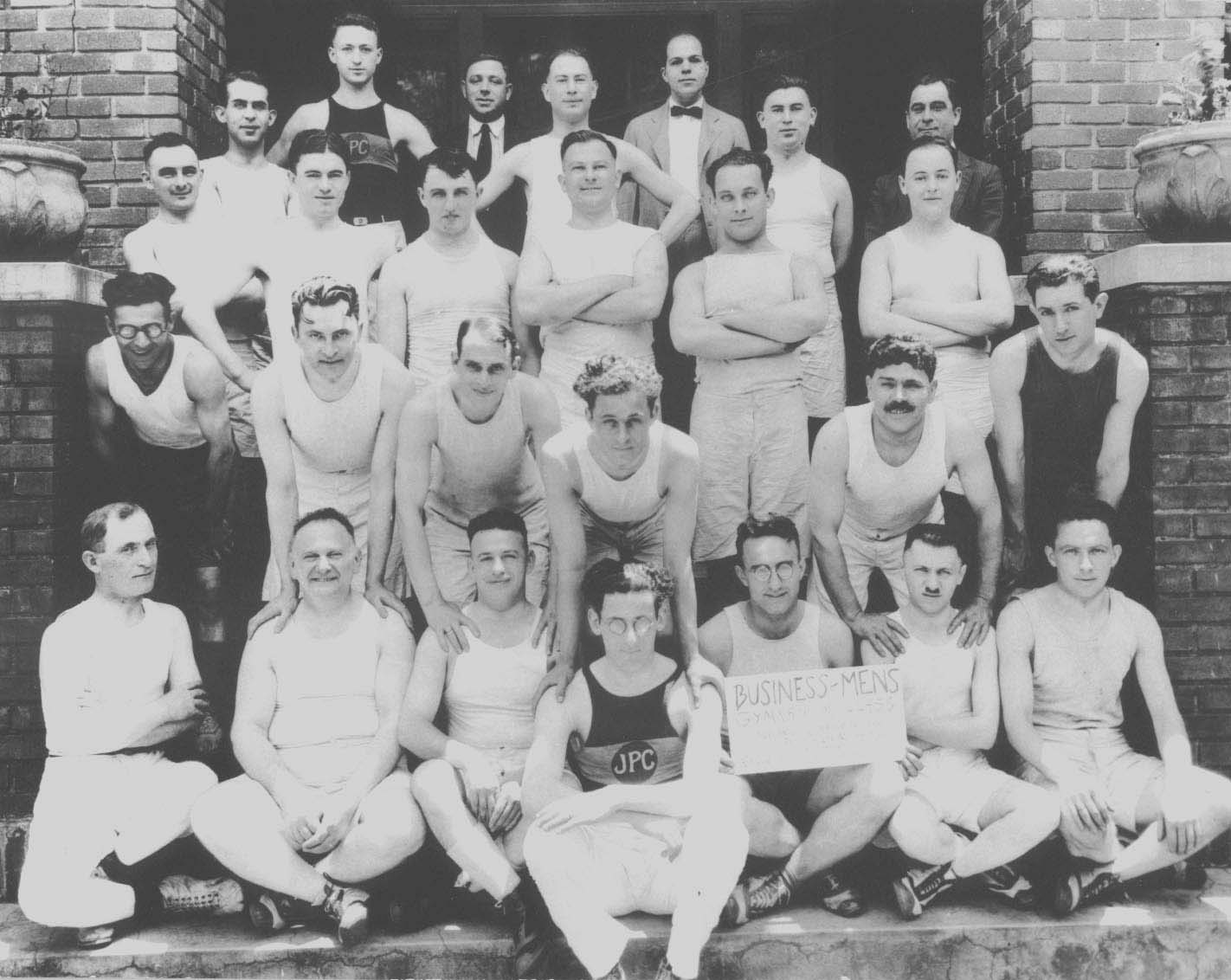Jewish Atlanta’s Influence on Roaring 20s
The AJT visited the William Breman Jewish Heritage Museum to learn how Atlanta’s Jewish community influenced this fascinating decade.

This year marks the 100th anniversary of the Jazz Age, otherwise known as the Roaring Twenties. For that reason, the AJT recently visited the William Breman Jewish Heritage Museum to learn how Atlanta’s Jewish community influenced this fascinating decade. Jeremy Katz, director of the museum’s Cuba Family Archives, revealed how Atlanta’s Jazz Age Jewish community positively impacted the city’s trajectory, despite the dramatic changes inside and out of Jewish Atlanta.
“Jewish businesses were flourishing during the 20s,” Katz said.
Many Jewish businessmen still embraced the belief of the late Atlanta Constitution editor Henry Grady that entrepreneurship would make Atlanta the most advanced city in the South.
In 1925, Jewish businessmen responded even stronger to the Chamber of Commerce’s Forward Atlanta campaign, a movement created to build and attract even more businesses to Atlanta.
Jacobs Pharmacy, M. Rich & Bros. Co. (Rich’s), and Fulton Bag and Cotton Mills represented three of the largest Jewish-owned companies that were founded during the late 1800s but flourished during the 1920s and beyond. These companies significantly grew Atlanta’s economy. [A March 26 tour of the Fulton Bag and Cotton Mills, focusing on its Jewish history, is part of the Phoenix Flies celebration of Atlanta historic sites next month.]

Also, companies such as Prior Tire, Bass Dry Goods, Apex Supply, Massell Lumber Co., and Barkers Bakery provided much needed services to Atlanta’s 1920s community, and many Jewish businesses employed African Americans when white businesses would not.
Many Jewish people with German heritage had already assimilated into Atlanta during the 1800s. However, 1920s brought in an influx of Eastern European Jews.
“During the 20s, many Eastern Europeans came to America escaping the pogroms of Russia. When they came to Atlanta, the Eastern European Jews and the already established German Jews clashed with each other. There were divisions,” Katz stated.
According to retired engineer William Gary’s oral history in the Breman archives, “The German Jews lived on the North side. They went to the Temple. They didn’t wear yarmulkes …They drove to schule. The women sat together with the men at services, and at their parties they (whisper this part) ate treife!”
Eastern European Jews were more religious and attended congregations Ahavath Achim and Shearith Israel.
Amidst this internal rift, the Atlanta community was drastically changing on many levels. Technology was on the rise. Autos were quickly replacing horse and buggies.
“… We did get a car. My grandmother … never got used to the idea of an automobile. She was afraid it would just blow up …,” states Josephine Heyman, a 1920s Jewish resident of Atlanta.
Atlantans went to the Loew’s Grand Theatre or Paramount Theatre to view talkies. In 1922, WSB was Atlanta’s first radio station, and the first program broadcast the weather and other market news, news flashes, and jazz. Women in Georgia were finally able to vote in 1922, even though the 19th Amendment was ratified and adopted by Congress two years earlier in 1920. Anna Teitelbaum Wise was a Jewish suffragette who advocated for women’s rights in Atlanta. She was the first female graduate of Georgia Tech. Many Jewish suffragettes supported the National Council of Jewish Women.
In 1925, the Southern Israelite newspaper, the precursor to the Atlanta Jewish Times, was founded. It epitomized the 1920s rapid culture of consumption. The newspaper was packed with ads to buy everything from Merita breads to Coca-Cola.

Newspapers such as the DeKalb New Era featured Margaret Sanger’s controversial birth control ads, and jazz was the soundtrack of the decade. Young Jewish women defied their parent’s Victorian rules and bobbed their hair and wore knee-length skirts. Men and women smoked together in public.
Dwight Andrews, an Emory University music professor, told the AJT, “Jazz was loved by many races because it sounded like the future. It was the music that seemed to embody a [freer] society.”
Jazz was so pervasive that the Ghetto Swingers, a Jewish jazz band, played Benny Goodman to mentally escape the evils of the Theresienstadt ghetto.
However, some changes were more sinister, like the rise of the Ku Klux Klan.
“There was a resurgence of the Klan in 1915, after the lynching of Leo Frank. Klan membership surged even more during the 20s,” Katz said.
The Klan was threatened by Jewish immigrants, Jewish progress, and Jewish leniency towards African Americans.
Also, Jewish soldiers returned from Europe after World War I as heroes. This added to the Klan’s ire.
They were a reminder that the 1920s held a lot of dangers for Atlanta’s Jewish population. The memory of Frank’s lynching still clung to the Jewish community. The Southeast chapter of the Anti-Defamation League, a Jewish civil rights organization, founded in 1913, grew even stronger in the 20s, mainly as a result of the Frank tragedy.
Retired dentist Marvin Goldstein’s oral history details his father’s 1920s business with the U.S. Penitentiary and his interactions with the KKK. He had a contract with the federal government to collect white duck clippings. Mail bags were made out of these clippings. He would also pay the Klan to collect the old sheets they wore. An African American employee would collect the sheets to be taken to a factory and turned into white writing paper. Goldstein noted that everything was about business back then. However, any attempts to have friendly social interactions between Jews and the Klan were strictly forbidden, even dangerous.

Jews still could not join mainstream white organizations, so they created The Standard Club, the Progressive Club, and the Don’t Worry Club. Many colleges such as Harvard University had quotas for admitting Jews. And even in Atlanta, Emory’s dental school, founded in 1916, discriminated against Jews.
In 2012, Emory publicly apologized to the Jewish community for discriminating against Jewish students in its dental program from 1948 to 1961.
Nevertheless, Atlanta’s 1920s Jewish community was as vibrant, active and complex as the decade in which it was a part. And, although the Roaring Twenties has long past, the Jewish legacy of the 1920s can still be seen in Atlanta today through strong business models such as The Home Depot, founded by Jews, and through community events such as the recently-ended Atlanta Jewish Film Festival, believed to be the country’s largest.
The fascinating lives and voices of Goldstein, Heyman, and many more 1920s oral histories and artifacts can be found at The Breman Museum. It’s packed with stories still waiting to be discovered about that period in history.



comments